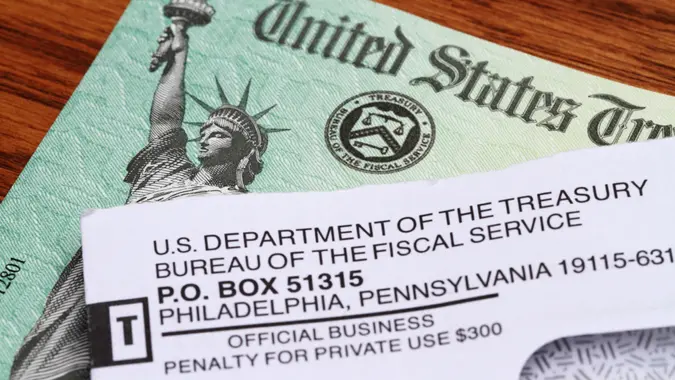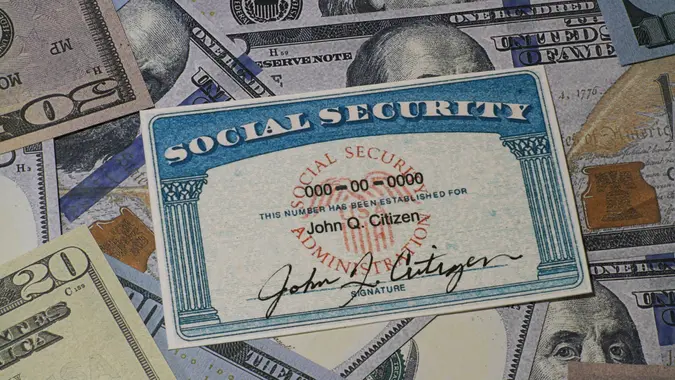Here Are the States With the Highest Taxes on Social Security Benefits

Commitment to Our Readers
GOBankingRates' editorial team is committed to bringing you unbiased reviews and information. We use data-driven methodologies to evaluate financial products and services - our reviews and ratings are not influenced by advertisers. You can read more about our editorial guidelines and our products and services review methodology.

20 Years
Helping You Live Richer

Reviewed
by Experts

Trusted by
Millions of Readers
Social Security recipients must pay federal income taxes on their benefits if they hit certain income thresholds, which is the case with about 40% of beneficiaries. But the vast majority of recipients don’t have to pay state taxes on benefits. Only 10 states now tax Social Security benefits, which is down from 12 states a year ago.
As Money reported, Missouri and Nebraska both ended state income taxes on Social Security benefits effective Jan. 1. The new policies are expected to save beneficiaries up to $309 million a year in Missouri and $17 million a year in Nebraska.
The 10 states that still tax Social Security benefits at the state level are Colorado, Connecticut, Kansas, Minnesota, Montana, New Mexico, Rhode Island, Utah, Vermont and West Virginia. Some states are weighing legislation that would significantly expand exemptions and deductions for Social Security recipients, according to Money.
Because so many different deductions, exemptions and other loopholes exist that influence Social Security income taxes at the state level, it’s not easy to determine which states have the highest taxes on Social Security. However, based on Money’s analysis, these are the five states with the highest rates on Social Security benefits and retirement income at the upper ranges:
- Minnesota: 5.35% to 9.85%
- Vermont: 3.35% to 8.75%
- Connecticut: 3% to almost 7%
- West Virginia: 3% to 6.5%
- Montana: 1% to 6%
At the federal level, Social Security recipients must pay taxes on benefits if they have “substantial” outside income from sources such as wages, self-employment, interest, dividends and other taxable income, according to the Social Security Administration.
Individuals with provisionary income above $25,000 and joint filers above $32,000 must pay taxes on up to 50% of their Social Security benefits. For individuals with provisionary income above $34,000 and joint filers above $44,000, up to 85% of Social Security is taxed.
As previously reported by GOBankingRates, U.S. Sen. Pete Ricketts (R-Neb.) wants to eliminate federal income taxes on all Social Security benefits. In September, Ricketts introduced the Social Security Check Tax Cut Act, a bill that aims to begin a total phaseout of federal taxes on benefits. The bill was modeled after the successful earlier effort to eliminate state taxes on Social Security benefits initiated when Ricketts was Nebraska’s governor.
In January, U.S. Rep. Angie Craig (D-Minn.) announced similar legislation, called the “You Earned It, You Keep It Act,” to eliminate federal taxes on Social Security benefits. Her bill would eliminate all federal taxes on Social Security benefits beginning in 2025. It would be paid for by raising the cap on the Social Security payroll tax, which means higher-earning Americans would continue paying into Social Security beyond the current yearly threshold of $168,600.
 Written by
Written by  Edited by
Edited by 

























